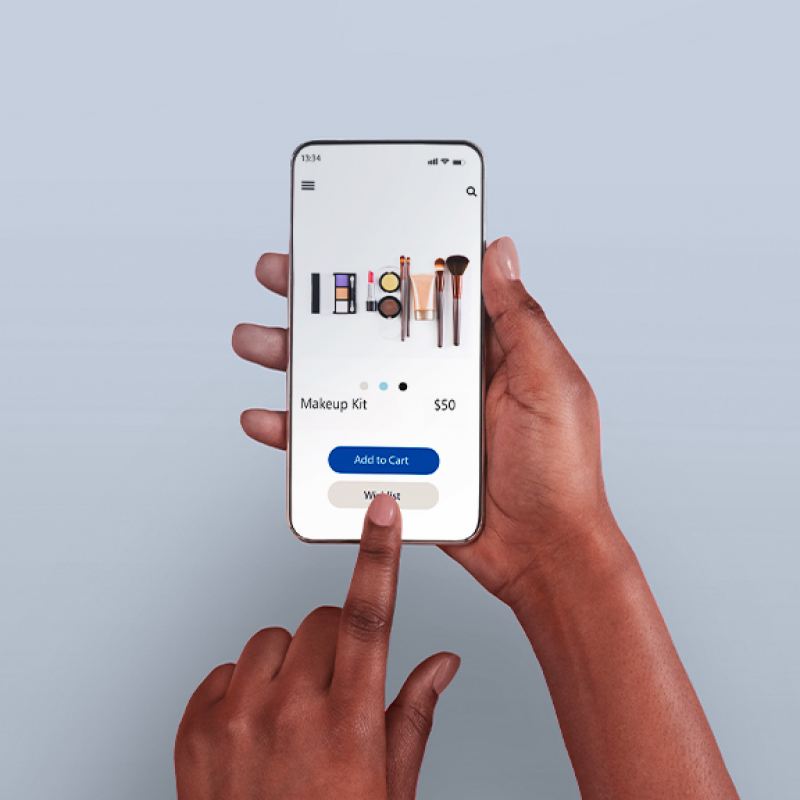From Memes To Merchandise – Evaluate Your Social Commerce Potential
By Anusha Azees (6 min read)
If you find yourself spending vast amounts of your time scrolling, discovering and consuming content on social media platforms, you are not alone. 70% of frequent shoppers are using Instagram to discover products and 50% of TikTok users claiming they discovered a new product or brand on the app.
The ease and comfort of purchasing straight from your favorite apps has driven a global increase in the social commerce segment of e-commerce by double digits over the past year, and is expected to continue its massive expansion over the next five years, with China’s retail social commerce sales forecast to reach $1.5 trillion by 2026*.


70% frequent shoppers use Instagram to discover products

50% TikTok users have discovered a new product/ brand on the app

$1.5 trillion forecasted for Chinese retail social commerce sales by 2026
Simply defined, social commerce is the process of selling products directly through social media platforms. For users, it’s the process of discovering, researching, and making a purchase on social media, without ever leaving the platform. While many apparel and lifestyle brands continue to successfully leverage the social commerce environment, there is a tremendous global growth opportunity for other brand categories too.
Here are a few things to evaluate when considering social commerce:
1. AUDIENCE FIT
If you are on social media, you are already engaging with an audience that is of considerable importance for your business. Gen-Z’ers and people below the age of 35 form over 63% of social media audiences. That’s a huge demographic of potential customers who are two clicks away from making a product purchase. Take a hard look at your audience engagement stats to consider the following:
- How does your audience discover and research your product?
- What are the factors that influence final decision-making?
- Is there an opportunity to translate this interest and brand engagement into a purchase?
- What is the user experience expectation for your brand?
2. PRODUCT FIT
Not all products are right for social commerce. But, social commerce can provide opportunities to test out new product lines or extensions of the brand. For example, if you are a brand that is retail friendly, a combination of having a product catalog and dynamic ads can help drive audiences to complete a purchase. What about a high-involvement category like cars? Does it make sense for them to leverage social commerce? I would say, yes and to test it out. Maybe not for the car itself but accessories and brand merchandise. Think of brand coffee mugs, hoodies and T-shirts as a product extension.
Inspiration from your own social media content that went viral or from a meme can become potential sources of generating additional revenue. Whether your purpose is to push the actual product or is an extension of it for audience engagement, you are capturing consumers with spending power who are a mere click away from spending their money. Don’t let it slip away.
3. INFLUENCERS
Social commerce is driven by attention, buzz, and a need to be part of the virtual clique – whichever clique that might be. It’s a version of the table you get to sit at or don’t get to sit at, feeding on the ‘fear of missing out’. Influencers play a major role in driving interest towards a brand. If you are serious about social commerce, you need to get serious about having an influencer marketing strategy or a strategy for content creators who are popular on the desired platforms.
4. CHECK ELIGIBILITY
Not all brands are eligible for setting up a store. Ensure you do an eligibility check first. Also, let’s be honest: sometimes the investment in the logistics that go behind the efforts are not worth the returns. So, evaluate the decision like you would any other distribution channel. Logistics planning is equally important in trust building.
5. ADAPT CONTENT
As a ground rule, don’t get too salesy. Be smart about your content and the perception you are trying to build. It has to be entertaining as much as it is brand and audience relevant. Remember, you are selling your product for a 2-second attention span. Invest in good photographs, videos and more. Explore dynamic ads. Refine targeting and retargeting content based on audience behavior. Have a compelling call to action. More importantly, embrace trends while making it your own.
Social media is an escape into a curated life. Social commerce is an opportunity to allow your brand to fit into the curated mood board of your audience. Test, roll-out, and see what works best for your audience and your brand. After all, exploring an additional channel for revenue generation is always great for business.
For more on how your brand can benefit from social commerce, contact Anusha Azees at [email protected].





